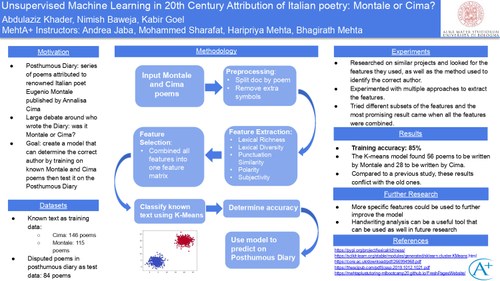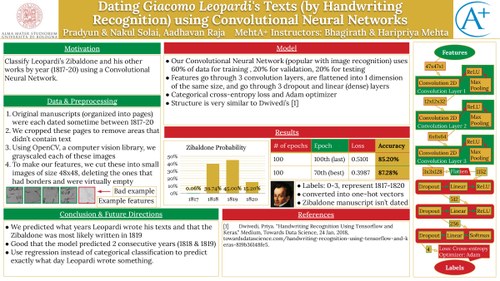HAWTER
PROGETTO HAWTER (Hand Writing Time Recognition)
supervised by P. Italia, S. Obbiso, R. Priore, A. S. Lippolis, G. Totaro
The HAWTER Project (Hand Writing Time Recognition) intends to apply computational analysis (with supervised and unsupervised machine learning) and CNN to cases of authorship and time recognition on ancient and modern manuscripts, both through stylometric analysis and with clusters of graphic patterns to identify, starting from unknown cases, autography and writing chronology. The case studies - analyzed in collaboration with MIT (Mehta Tutoring Alumni) - are related to Montale's posthumous Diary and Leopardi's Zibaldone.

The case of the Posthumous Diary by Montale
The Posthumous Diary is a collection of 84 compositions attributed to Eugenio Montale but made public between 1986 and 1996 by Annalisa Cima, the poet's latest muse. Cima claimed to have secretly received the papers from Montale himself inside 11 envelopes with the specific task of revealing their contents once a year for 11 years, starting from the fourth or fifth year after the poet's death. Many scholars of poems both from a philological (Isella, Petrucci) and stylistic point of view (Mengaldo, Raboni) have considered this collection a fake, or rather, a collage of mixed texts, some actually by the hand of the poet and conceived by him, together to texts written by Cima or others or collected and put together starting from recordings of the poet's voice.
During 2021, the students of the Bootcamp organized by Mehta + Tutoring applied some Machine Learning techniques on this case (poster in the photo and attached paper), the results of which are added to the studies already completed in previous years by Italia and Canettieri (2013 ) and by other scholars of different disciplines (Condello 2016).

The case of Leopardi's Zibaldone di pensieri
The Zibaldone di pensieri counts 4526 pages, written between 1817 and 1832. The autograph is now collocated in the Leopardi collection (C.L._V.1) of the National Library of Naples. The first hundred pages constitute a 'apart', the distinctive feature of which is the lack of the date which is instead systematically applied in the following pages. We know that Leopardi writes the first page in "July or August 1817" - Leopardi puts this date retrospectively, probably when he begins to date the entire diary - and the hundredth in January 1820. The students of the Bootcamp organized by Mehta + Tutoring, during the 2021, worked on this case using a neural network for handwriting recognition: dating hypotheses of these pages were proposed through an analysis of the variation of Leopardian handwriting over time, carried out on rigidly dated - and possibly typologically uniform - autographs. - like the letters, compared with the pages of the Zibaldone of our interest.